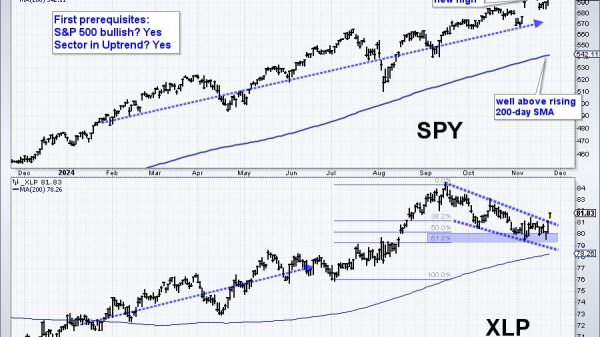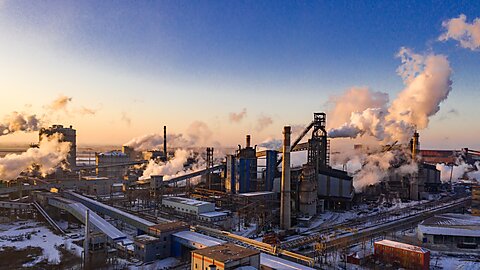Travis Fisher
This is Part One of a multiple‐part response to the recent court order issued in the case Held v. Montana.
On August 14, Montana District Court Judge Kathy Seeley sided with climate activists (“youth plaintiffs”) in Held v. Montana, a first‐of‐its‐kind victory in a climate lawsuit. This is a big deal. Media coverage has referred to it as a “landmark climate case,” a “significant victory,” and a “gamechanger.” Beyond finding that a recent statute was unlawful under the Montana state constitution, the judge found that the defendants—16 youth plaintiffs in Montana represented by a climate group called Our Children’s Trust—had legal standing to sue on the grounds that they were, in fact, injured by climate change.
Observers of climate lawsuits like this one have said for years that legal standing was impossible to establish for climate damages. Under state suits, the criteria for legal standing can vary but tends to require actual or imminent injuries caused by climate change that are “remediable,” i.e., curable by a court victory. Held v. Montana sets a worrying precedent that could, at least according to local attorneys, “likely provide a blueprint for climate change litigation throughout the nation.” It is troubling not just because it violates longstanding rules of legal standing, but because it gives legal imprimatur to the flawed arguments made in support of radical government actions to address climate change during the trial.
It is not sufficient that the defendants might win on appeal and overturn the order. Some of the arguments put forward in Judge Seeley’s Findings of Fact, Conclusions of Law, and Order (the “Order”) are simply inaccurate and warrant swift refutation before the next round of legal review takes place. Other arguments carry grains of truth that deserve the fuller context one might expect from a comprehensive trial. This piece offers the beginning of a rebuttal to the Order, which calls for an end to the consumption of hydrocarbon energy (“fossil fuels”). For judges or policymakers who would ban fossil fuels—which provide 80 percent of our primary energy sources (domestically and globally)—please consider the costs.
Snapshot of the Case
Plaintiffs challenged the constitutionality of a 2023 change to Montana’s statute dealing with the Montana Environmental Policy Act. That change stated that environmental reviews “may not include an evaluation of greenhouse gas emissions and corresponding impacts to the climate in the state or beyond the state’s borders.” Judge Seeley found that provision inconsistent with the article of the Montana state constitution, added in the early 1970s, that reads, in relevant part: “The state and each person shall maintain and improve a clean and healthful environment in Montana for present and future generations” (emphasis added).
In addition to finding the 2023 statute unconstitutional, Judge Seeley granted standing to the plaintiffs, affirmed their harm and injury, and found that: “This judgment will influence the State’s conduct by invalidating statutes prohibiting analysis and remedies based on GHG (greenhouse gas) emissions and climate impacts, alleviating Youth Plaintiffs’ injuries and preventing further injury” (emphasis added).
Before we explore whether any single state’s climate policy—or any single nation’s—could conceivably alleviate or prevent injuries from climate change, which is a global phenomenon, let’s take a step back and talk about the uncontroversial parts of the Order.
Yes, Montana, There Is Climate Change
There are some facts about climate change that most of us can agree on, no matter where we land on the political spectrum. Here are a few: 1) The climate is changing; 2) Human activity has an impact; 3) Carbon dioxide (CO2) is a GHG; 4) Globally, GHG emissions are on an upward trend (although global economic slowdowns create temporary downticks); and 5) The concentration of CO2 in the atmosphere is increasing and appears to be accelerating slightly in recent years. So, before anyone feels compelled to ask “Do you believe in climate change?,” my unambiguous answer is “Yes.”
The five things listed above are near‐universally accepted facts, in part because we have sophisticated ways to measure temperature and CO2—a great example is the atmospheric CO2 record from the Mauna Loa Observatory in Hawaii (see below).
Temperature records are less straightforward, but we do have direct readings from thermometers for over 100 years, and global average surface temperatures are on an upward trend in that data set as well. The Global Surface Temperature records reported by the National Oceanic and Atmospheric Administration, for example, show that the 2022 average surface temperature was a bit more than one degree Celsius warmer than some of the earliest direct measurements, and bit less than one degree Celsius warmer than the 1901–2000 average (see below).[1] We also have interesting (if perhaps slightly less reliable) proxy temperature records established by paleoclimatologists using tools like ice core samples and tree rings that go back thousands of years.
Clarifying the Impact of CO2 on Human Health
Although it’s true that ambient CO2 concentrations are going up, we must understand that CO2 is not a traditional pollutant and causes no direct adverse biological impact in humans at ambient concentrations. In percentage terms, a concentration of 420 parts per million (ppm) equates to 0.042 percent of the atmosphere (nitrogen makes up roughly 78 percent, oxygen 21, and other trace gases like Argon and CO2 make up the rest). In fact, the Occupational Safety and Health Administration established safe levels of CO2 in the workplace in the range of 5,000 to 10,000 parts per million (ppm), so breathing in the levels of CO2 in the ambient atmosphere—less than one‐tenth the level of the safe threshold—is simply not directly harmful to human health.
We should be clear about terms like “carbon pollution”—CO2 should not be confused with traditional pollution like toxic levels of heavy metals or dangerous smoke. But the Order blurs the line between CO2 as a GHG and CO2 as a harmful pollutant by interchangeably referring to CO2 as a GHG (throughout), as “fossil fuel pollution” (p. 86) and as “fossil fuel emissions” (pp. 90, 92). In paragraph 124, the Order states “Childhood exposure to climate disruptions and air pollution can result in impaired physical and cognitive development with lifelong consequences. Air pollution can trigger or worsen juvenile idiopathic arthritis, leukemia, and asthma in children” (emphases added). It is unclear whether the judge was referring to CO2 as the “air pollution” in question. (Historical note: traditional pollutants are all on a downward trend in the United States)
The below image (accompanying an article about CO2 emissions) illustrates the rhetorical device used by some climate activists in framing CO2 as a pollutant that is harmful to breathe and a trigger for illnesses like asthma. One harmful consequence of the Order could be that the rebranding of CO2 as “fossil fuel pollution” now has a patina of legal seriousness.
Okay, but what about indirect impacts? The obvious risk of increased CO2 emissions is global warming and the indirect health impacts that accompany it (there are other costs occurring elsewhere, such as those stemming from sea level rise, but I’ll focus on the Montana‐specific costs identified in the Order). The Order discusses at length the impacts of two of these changes: temperature increases and air pollution from wildfires. Both issues are important but received a very one‐sided discussion in the Order.
Temperature: Studies suggest extreme cold weather may be more fatal than extreme hot weather, and it stands to reason that the impacts of cold weather would be more acute in a high‐latitude state like Montana. Government data also suggest people living in rural areas are at higher risk of cold‐weather fatalities, and Montana’s population density ranks the third lowest in the nation (only Alaska and Wyoming have lower population density) according to 2020 Census Bureau data. The judge’s focus on the physiological impacts of heat (and lack of focus on the impacts of cold) is an unbalanced discussion of the temperature impacts. For example, p. 118 states: “Exposure to extreme heat can cause heat rash, muscle cramps, heatstroke, damage to liver and kidney, worsening allergies, worsening asthma, and neurodevelopmental effects.” The Order ignores the health impacts of extreme cold, which is not appropriate given Montana’s latitude.
Wildfires: The connection between CO2 emissions and wildfires is tenuous at best. Bjorn Lomborg used data from the National Aeronautics and Space Administration to show that the total land area of the world burned by wildfires has trended downward in recent years. Roger Pielke, Jr. examined the treatment of wildfires in reports by the Intergovernmental Panel on Climate Change (IPCC)—he concluded that the IPCC “has not detected or attributed fire occurrence or area burned to human‐caused climate change.” Personally, I suffered acute illness from the wildfire smoke that covered the Washington, DC area for several days this summer. I can vouch for the unpleasantness of inhaling wildfire smoke and the health impacts. However, an objective look at the data does not reveal a link between CO2 emissions and wildfires, certainly not the causal link needed in a court setting. That causal link may be shown eventually, but the IPCC reports do not provide the degree of attribution certainty required in a lawsuit.
Conclusion
We should be clear about what CO2 is and is not. It is a GHG that is increasing in concentration and contributing to climate change, but it is not harmful to breathe in concentrations 10 times higher than exist in the atmosphere. Calling it “fossil fuel pollution” is a rhetorical device that obscures and confuses the debate over climate policy. Sadly, the court Order gives an undue legal endorsement to such one‐sided rhetoric. It also doubles down on the flawed arguments that 1) heat represents a greater health risk than cold, especially in high latitudes, and 2) increased CO2 concentrations are associated with (or even cause) more wildfires.
[1] There are disagreements about how surface temperature should be averaged (and to what extent the average is biased upward by the urban heat island effect); however, it is important to acknowledge the warming trend.
























